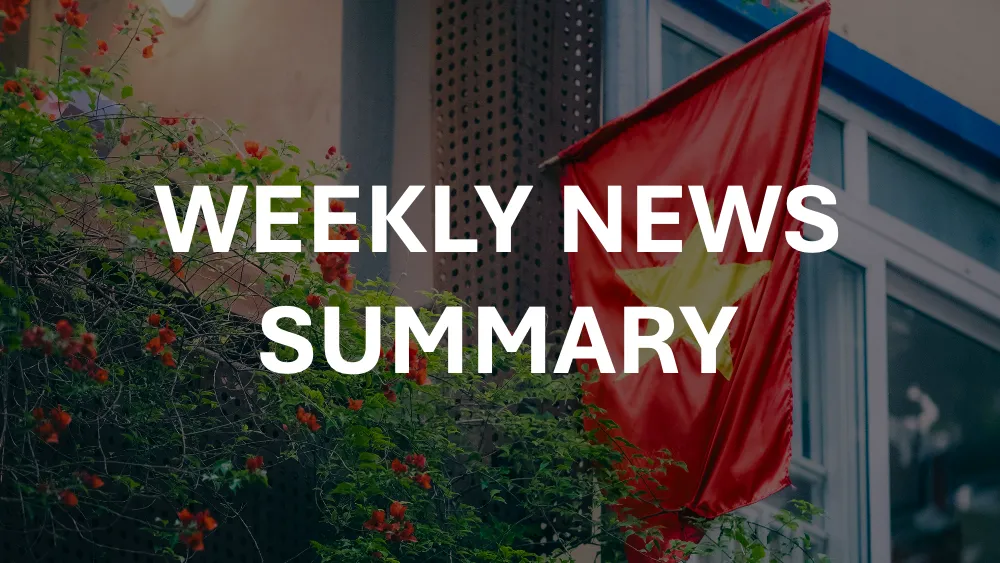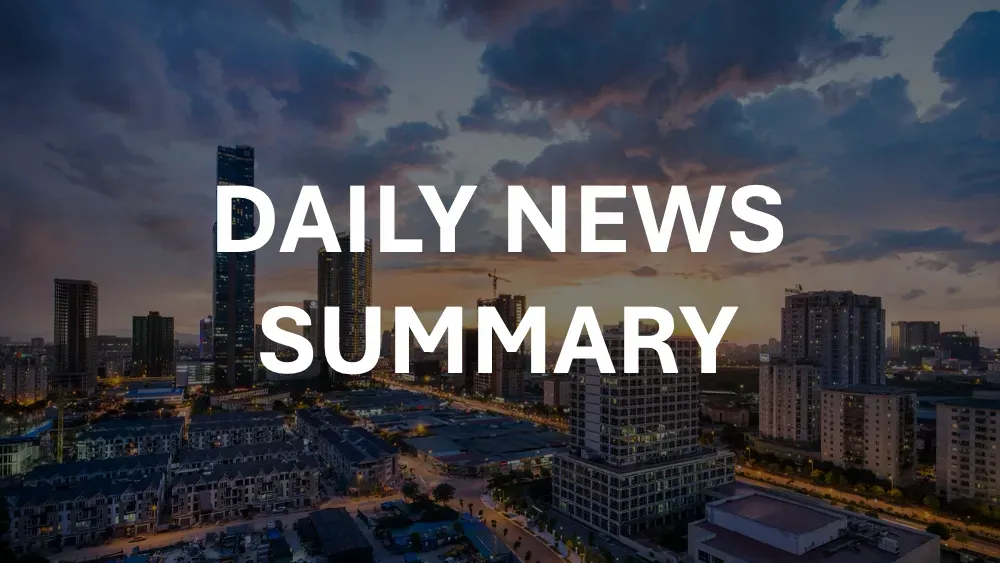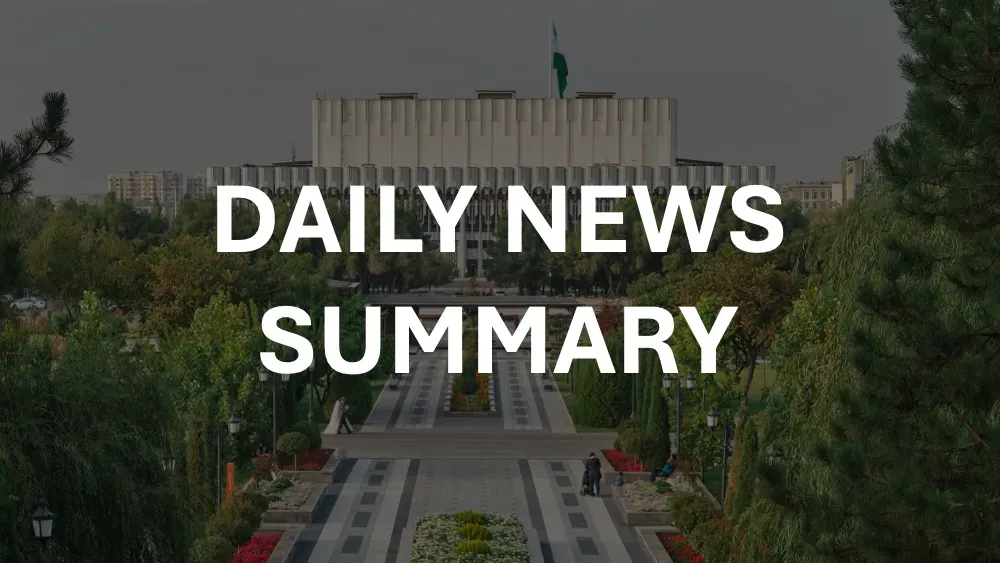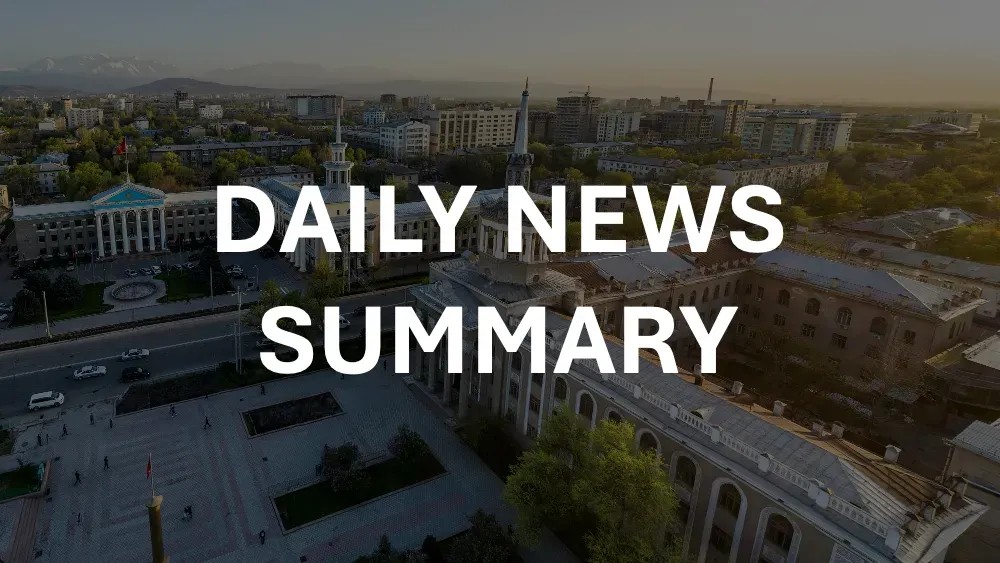This weekly digest showcases just 10 stories. Daily subscribers receive comprehensive intelligence briefs with 40 of the top stories organized by category. Don't miss the stories that matter.
Subscribe to Daily →
October 3, 2025 to October 9, 2025
This week's top 10 stories from Vietnam, selected from our daily intelligence briefs.
1. FTSE Russell Upgrade Sets 2026 Path for Việt Nam Equities, Government Orders Reforms to Secure Capital Inflows
FTSE Russell has reclassified Việt Nam from Frontier to Secondary Emerging, effective 21 September 2026 subject to an interim review in March 2026 focused on global broker access and index replication mechanics. The decision follows recent regulatory fixes (removal of pre‑funding for offshore investors, formal failed‑trade handling) and broader infrastructure reforms; the government has ordered faster foreign account openings, consideration of easing foreign ownership limits, and a central counterparty (CCP) clearing rollout by early 2027 to secure inflows.
Brokerages and asset managers expect phased capital rotation into Vietnamese equities, with active allocations potentially lifting total inflows to $5–10 billion and FTSE‑linked passive flows of roughly $1–1.5 (to $1–2) billion tied to formal inclusion tranches. Analysts warn of near‑term volatility and profit‑taking ahead of passive buys, with large-cap, liquid names (VIC, VHM, HPG, VCB, MSN, VNM, VRE, SSI, VND) most likely to benefit; authorities and market participants signal the upgrade is a catalyst for higher governance standards and deeper institutional participation as Việt Nam pursues possible MSCI Emerging status later this decade.
Local Coverage: vnexpress.net, vietnamplus.vn, baotintuc.vn, tuoitre.vn, vneconomy.vn, com.vn, thanhnien.vn
From daily briefs: 2025-10-08, 2025-10-09, 2025-10-10
2. National Master Plan Overhaul Sets 2030 Growth Targets and New Economic Corridors
On 11 May 2024 the Government adopted Resolution 306/NQ-CP revising the National Master Plan for 2021–2030 with a 2050 vision, setting ambitious targets of average annual GDP growth above 8% and per‑capita income of about USD 8,500 by 2030. The strategy reorients growth toward technology, innovation and digital transformation, aiming for the digital economy to account for roughly 30% of GDP by 2030, and emphasizes upgrading higher education, healthcare quality and climate resilience.
Spatially, the plan concentrates investment in five national growth regions—Northern (Hanoi), Southern (Ho Chi Minh City), Central Coast (Da Nang), Mekong Delta (Can Tho) and the North Central Coast (Thanh Hoa–Nghe An–Ha Tinh)—and strengthens national and cross‑border corridors: North–South, East–West, Lào Cai–Hanoi–Hai Phong–Quang Ninh and Moc Bai–HCMC–Bien Hoa–Vung Tau. Infrastructure priorities include transport, energy, water, social/cultural facilities and data infrastructure, signaling large public and private investment opportunities while raising questions about regional equity, implementation capacity and environmental trade‑offs.
Local Coverage: vietnamplus.vn, baotintuc.vn, vneconomy.vn, vneconomy.vn, com.vn
From daily brief: 2025-10-08
3. Strategic Investment Momentum Builds with Record FDI and Push for Localized Production
Vietnam is attracting record foreign investment as it consolidates its reputation as a politically stable, pro‑business gateway into Asia’s supply chains. Registered FDI reached $28.54 billion by Sept. 30, up 15.2% year‑on‑year, while realized FDI hit $18.8 billion—the strongest nine‑month result in five years—and broader investment climbed 11.6% in the first nine months, reflecting sustained private and public sector engagement.
Chinese strategist Nghiem Kien Hoa (Chairman, Professional Strategy Research Institute) attributes the momentum to reforms that lower development costs and boost efficiency, and forecasts Chinese firms shifting from simple processing to localized production, value‑chain integration and long‑term regional export platforms. He argues this trajectory could position Vietnam among Asia’s most dynamic economies over the next two decades and envisages the country evolving into a regional production and R&D hub.
Local Coverage: vietnamplus.vn, vietnamplus.vn
From daily brief: 2025-10-09
4. Breakthrough Resolution 193 Fast-Tracks 5G Rollout, Opens LEO Satellite Trials and Eases Subsea Cable Approvals
Vietnam’s National Assembly has approved Resolution 193/2025/QH15 and Decree 88/2025, a pilot legal framework to fast‑track telecom modernization by coupling targeted incentives with streamlined approvals. The package offers up to 15% state co‑funding for operators that deploy at least 20,000 5G base stations in 2025 (with audit and clawback provisions). Operators already report 11,000+ 5G sites covering roughly 26% of the population and are targeting 68,000 sites and 90% population coverage by end‑2025, underlining an aggressive rollout timetable.
The framework also opens controlled trials of low‑Earth orbit (LEO) satellite services for up to five years with no foreign‑ownership cap; the Prime Minister has authorized SpaceX to pilot Starlink tied to a potential US$1.4 billion equipment investment. International subsea cable development is expedited via domestic investment procedures and selective bidding through 2030, with new VT5S and recently activated SJC2 and ADC routes boosting capacity and resilience. Collectively, the measures signal Vietnam’s push to accelerate digital infrastructure deployment and attract foreign capital to meet ambitious connectivity and economic‑competitiveness goals.
Local Coverage: vietnamplus.vn
From daily brief: 2025-10-10
5. World Bank Sees East Asia Resilience with 2025 Upgrade; Vietnam Projected to Lead Growth at 6.6%
The World Bank’s October 2024 East Asia and Pacific update raises the region’s 2025 growth forecast to 4.4% (from earlier estimates) and holds 2026 at 4.3%, citing resilience amid trade frictions and global policy uncertainty. Vietnam is projected to lead developing peers with 6.6% growth in 2025, driven by recovering manufacturing, firmer domestic demand and macro stability; China’s outlook is revised to 4.8% for 2025 before easing to 4.2% in 2026 as stimulus wanes and domestic headwinds persist.
The report flags a “jobs paradox” — solid GDP growth but insufficient quality employment, with most new jobs in low‑productivity informal services and weak youth and female labor force participation. World Bank officials (Carlos Felipe Jaramillo and Aaditya Mattoo) urge Vietnam to pursue institutional reforms and productivity gains to convert supply‑chain opportunities into higher‑quality job creation and sustained growth.
Local Coverage: baotintuc.vn, vietnamplus.vn, vietnamplus.vn, vneconomy.vn
From daily brief: 2025-10-08
6. VN-Index Sets Record High above 1,716 as Banks and Vingroup Lead Rally after FTSE Russell Upgrade
Vietnam’s VN-Index hit a 25-year high at 1,716.47 (+1.1%) after FTSE Russell moved to upgrade Vietnam toward Emerging market status, with Vinhomes (VHM) locking limit-up and banks (CTG, VPB, MBB, SHB) leading gains. Trading on HoSE neared VND 34 trillion; however breadth was mixed as liquidity concentrated in blue chips while mid- and small-caps saw profit-taking. Foreign investors remained net sellers (~VND 1.6–1.8 trillion in the session and roughly VND 270 trillion since 2020), even as targeted buys included VIC, TCB and BSR.
Analysts see further near-term upside—many brokers expect a push toward ~1,730—yet urge caution pending Q3 earnings and consolidation. SSI Research estimates the FTSE upgrade could bring ~US$1.6 billion in passive inflows (other brokers forecast US$3–8 billion with broader flows), but note this is modest versus multi-year outflows and that lasting capital attraction depends on reforms, deeper listings and continued market infrastructure improvements (non-pre-funding rules, settlement changes, KRX rollout, Decree 155 amendments). First FTSE-driven rebalancing is expected in September 2026, so immediate impacts on liquidity will likely be gradual.
Local Coverage: baotintuc.vn, vneconomy.vn, vietnamplus.vn, vnexpress.net, com.vn
From daily briefs: 2025-10-08, 2025-10-10
7. National Spectrum Plan Overhaul Sets Bands for 5G/6G, Wi‑Fi 6E/7 and LEO Satellites
On October 3, Vietnam’s Prime Minister approved Decision 37/2025/QĐ‑TTg, a comprehensive overhaul of the national radio frequency plan that replaces the 2013 framework and aligns domestic allocations with WRC‑23 outcomes. The revision updates 65 bands, adds 23 notes and 77 modifications, formally accommodates LEO/NGSO satellite systems (building on pilots like Starlink), mandates rapid mitigation of interference in the 10.7–12.75 GHz FSS downlink, and designates Ka‑band for new geostationary satellites (including Vinasat).
Crucially for telecoms, the plan earmarks 3,400–3,560 MHz and 6,425–7,125 MHz for IMT (the latter positioned as prime 6G spectrum), opens 5,925–6,425 MHz for Wi‑Fi 6E/7, and reserves 600 MHz for mobile use following digital TV clearance to boost rural coverage. Flexible sharing is introduced across 700/800/900 MHz to support mixed uses beyond public IMT. Authorities present Decision 37 as foundational to Vietnam’s high‑capacity digital infrastructure, economic digitization and space‑technology strategy through 2030.
Local Coverage: vneconomy.vn, vnexpress.net
From daily briefs: 2025-10-08, 2025-10-09
8. ASEAN Digital Economy Framework Set for 2026 with $2T Potential by 2030
ASEAN’s long-awaited Digital Economy Framework Agreement (DEFA) is on track for signing and implementation in 2026 after negotiators reported roughly 70% progress following the 14th round of talks in Jakarta. Indonesia’s Coordinating Minister for Economic Affairs Airlangga Hartarto highlighted the bloc’s digital economy at $263 billion in 2024, projected to reach $1 trillion by 2030 under current trajectories and potentially $2 trillion with full DEFA implementation; Indonesia alone is forecasted to account for about $360 billion by 2030, driven by an estimated $150 billion e‑commerce market.
Key DEFA priorities include rules for digital financial services, WTO‑aligned duty‑free treatment for electronic transmissions, non‑discrimination of digital products, governance for submarine cables, and flexible e‑payment systems. The pact would represent Vietnam’s first comprehensive digital economy agreement, prompting officials to accelerate regulatory and infrastructure readiness to capture region‑wide digital trade benefits. The timeline and specific provisions signal significant policy alignment across ASEAN that could materially expand regional digital trade and investment.
Local Coverage: vietnamplus.vn
From daily brief: 2025-10-08
9. ‘One-Touch’ Payments Gain Traction as QR and Tokenized Cards Reshape Vietnam’s Digital Finance Push
Vietnam is accelerating its cashless transition with policymakers, banks and payment networks aligning around “one-touch” payment experiences across retail, public services and transport. At the State Bank-backed Card Day 2025 forum officials reiterated targets from the national financial inclusion strategy — at least 80% of adults with transaction accounts by 2025 and non‑cash payment growth of 20–25% annually — while banks report near‑total migration to digital channels. Practical rollouts include Hanoi’s Cat Linh–Ha Dong metro pilot accepting chip IDs, Visa and QR scans in as little as 0.2 seconds, and NAPAS’s push to scale cross‑border QR with Thailand, Cambodia and Laos (China targeted by end‑2025, reverse connectivity in 2026).
Stakeholders are pairing convenience with risk controls: 3D Secure, tokenization and AI fraud detection are being deployed to manage fraud and operational risk as QR and tokenized cards extend into daily mobility and public services. The combination of ambitious inclusion targets, fast pilot implementations and regional QR interoperability positions Vietnam as a leading Southeast Asian testbed for seamless, multi‑modal digital payments — but success will hinge on scaling secure tokenization and cross‑border frameworks to meet Deputy Governor Pham Tien Dung’s expectation that payments become fully cardless.
Local Coverage: vietnamplus.vn
From daily brief: 2025-10-08
10. AI360 Forum Signals Policy Push as Government Plans Public Spending, Draft AI Law and National Supercomputing Center
At the AI360 2025 forum in Hanoi, Vietnamese officials signaled a strategic shift from pilots to large-scale AI deployment, pledging increased public spending, procurement preferences for domestic solutions via the NATIF fund, and infrastructure projects including a National AI Supercomputing Center and shared open datasets. The Ministry of Science and Technology is updating the national AI strategy to 2030 and has drafted a comprehensive risk-based Artificial Intelligence Law—expected to be submitted to the National Assembly by year-end—that enshrines seven principles (human-centricity, safety, transparency, accountability, national autonomy, inclusion, balanced risk management) and categorizes systems into four risk tiers with nine prohibited uses (e.g., manipulative behavioral targeting, broad social scoring, mass facial database scraping, emotion recognition in workplaces/schools).
The policy push accompanies rapidly accelerating market activity—investment in Vietnamese AI firms reportedly rose from $10m in 2023 to $80m in 2024 and AWS data suggest five local firms begin using AI every hour in 2024—while adoption expands across finance, education, health, e‑commerce and manufacturing. Persistent bottlenecks remain: talent shortages, data quality/access, compute capacity and limited enterprise spending. VINASA will unveil an AI Capability Maturity framework on 9 October to guide ROI-focused deployments and governance, reflecting an attempt to operationalize national strategy into measurable enterprise practices.
Local Coverage: vietnamplus.vn, baotintuc.vn, vnexpress.net, com.vn, vneconomy.vn, thanhnien.vn
From daily briefs: 2025-10-08, 2025-10-10
About This Weekly Digest
The stories above represent the most significant developments from Vietnam this week, selected through our AI-powered analysis of hundreds of local news articles.
Stories are drawn from our daily intelligence briefs, which synthesize reporting from Vietnam's leading news sources to provide comprehensive situational awareness for international decision-makers.
These weekly highlights are a small sample of what's happening. Daily subscribers get comprehensive briefings with 40 top stories that connect the dots between events, track developing stories, and provide the context you need for informed decision-making.
Upgrade to Daily →







